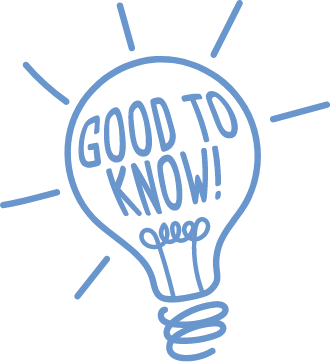
RECYCLED
PLASTIC ENABLES
ENVIRONMENTAL
PROTECTION!

RECYCLE FOR THE LIFE CYCLE!
Environmental protection is only possible through recycling. Because every day, our consumption of building materials, as well as consumption of
packaging products that enable our living standard, increases. Through recycling, products are transformed into new products after their usage.
This way, they are given a second valuable life. Contrary to public opinion, plastics can be recycled like this just like any other material.

RECYCLING –
WHAT DOES IT MEAN
FOR OUR CLIMATE?
Recycling protects our climate as it requires a lot less energy than manufacturing a new material. Through this, less CO2 is emitted into the environment. In addition, thanks to recycling, less waste is incinerated and dumped on landfills which further reduces CO2 emissions. To sum up, recycling is the solution that protects our environment and secures our life standard.

LESS IS MORE:
COMBINING THREE INTO ONE!
Packaging often consists of various materials. For instance, a yogurt cup with a paper sleeve or a coffee to go cup with plastic coating. In the recycling process, it’s difficult to separate all these material layers. Therefore, products consisting of multiple material types are immediately picked out in sorting facilities and end up in waste incineration. This is a waste of resources!

DESIGN FOR
RECYCLING:
HOW GREAT
IS THIS?
By 2030, all packaging that is manufactured in the EU has to be 100% reusable or recyclable. Further, packaging is only allowed to consist of a single material or it has to be ensured that the various material types can be separated easily in the recycling process. Through this, it is ensured that the product can be recycled at the end of its shelf live. Only then, resources can be reused again and again and again. The aim is to keep all materials within the substance cycle!
Upcycling or
Downcycling?
WHICH IS WHAT?
Upcycling is often described as revaluation and thus as a "better form of recycling". This is the case as through recycling, a product is created which holds a higher value than the previous product. Examples for upcycling include the manufacturing of backpacks and bags from used car tires, or the transformation of old pallets into furniture. Products generated by downcycling on the other hand, hold a lower value than the initial product they are made from. For instance, old clothes are turned into cleaning rags or lining paper. Does that mean that downcycling of no use? On the contrary! It’s better to create less value than no value at all.


THE PLASTIC BAG:
Better than expected!
Compared to all other alternatives, a plastic bag made of recycled material is the most environmentally friendly option. Nevertheless,
over the last few years, plastic bags have been banned from many supermarkets. Why? The public pressure has become so high due to the
anti-plastics opinion of our society, that the distribution of plastic bags was restricted by law.
Therefore, supermarkets substituted plastic bags with alternatives.
Even though this is a true nightmare for the environment!

For the same CO2 footprint of a plastic bag that is used 10 times, alternative bags have to be used significantly more often.

Plastic bags can be reused hundreds of times. Independent laboratories even claim that, with a plastic bag, you can carry 200 times the weight of 10 kg without the bag tearing. Which means you could use the same bag for 200 times to carry 10 milk cartons home each time!

PCR OR IR?
GOOD RECYCLING,
BAD RECYCLING?
Through post-consumer recycling (in short: PCR), the packaging waste of the end consumer like you is processed. The plastic waste is kept within a
closed cycle after correct disposal, and can thus be recycled into new products time and time again. This makes a real difference for the environment.
Post-industrial recycling (in short: IR) on the other hand, only uses waste that is generated during the production process of products right on the production
site. Which is of course also important, but doesn't address our waste problem.
CONCLUSION:
PCR and IR are both important for environmental protection, but only post-consumer recycling addresses YOUR waste as well.
PLASTIC
PROTECTS THE
CLIMATE!
Through recycling, less energy is used compared to the manufacturing of products out of new material. This is exactly what reduces CO2 emissions and thus protects our climate.
PLASTIC
IS
REUSABLE!
Plastic shouldn’t degrade, but should be used as a resource again and again through recycling. Only this can be called a real closed recycling loop!
PLASTIC
SAVES
RESSOURCES!
In the recycling process, waste is reused, which is why less new resources need to be used. This saves nature from unnecessary intervention and protects natural raw materials.
PLASTIC
IS
VALUABLE!
Waste does not belong in the environment, but needs to be reused as many times as possible, disposed of correctly, and then recycled. The motto: Put waste in the right place!
PLASTIC
REDUCES
WASTE!
Plastic is way too valuable to waste it. Through recycling, plastic waste is transformed into new and useful products. It is a fact: waste separation is key!

